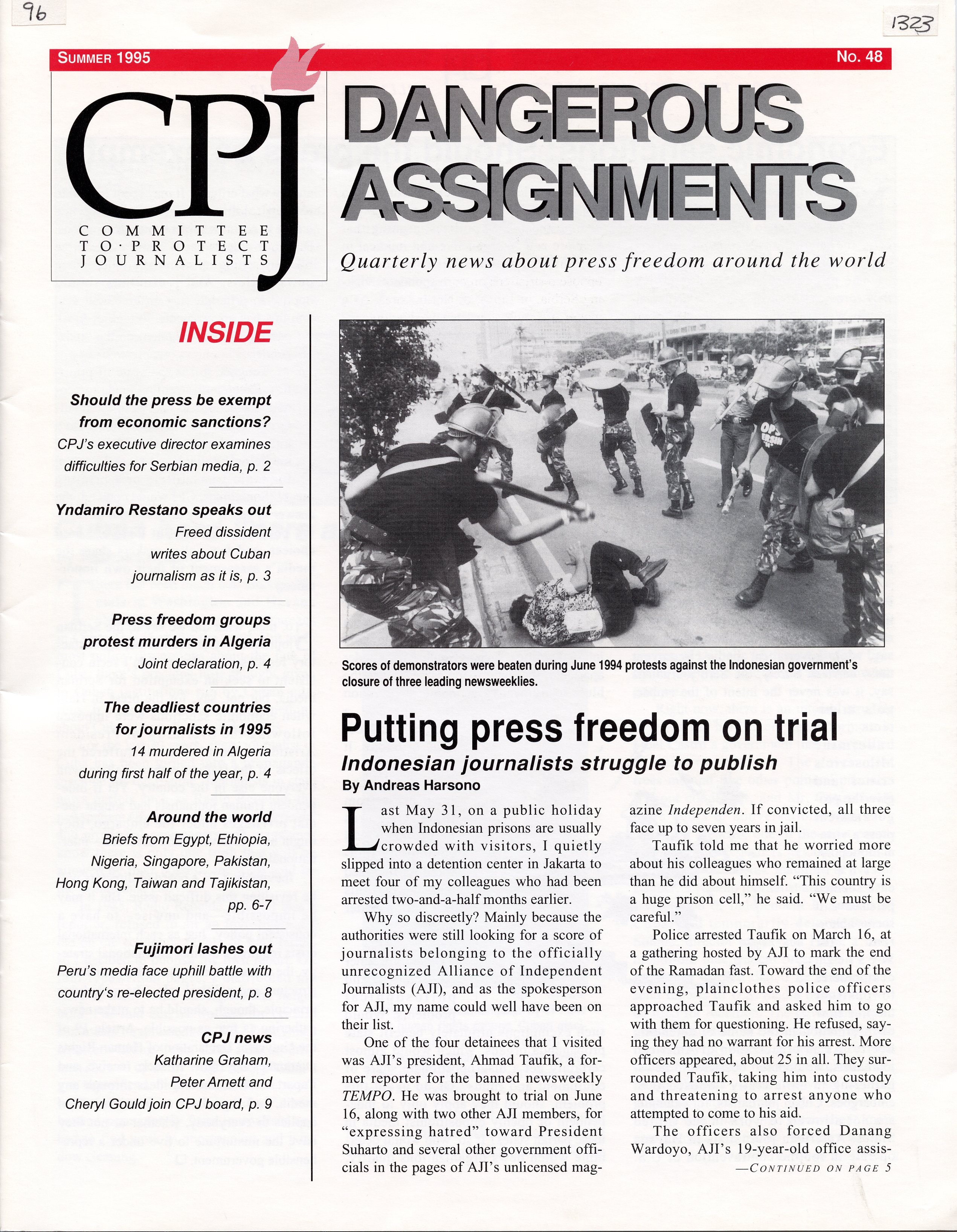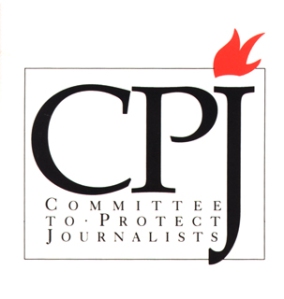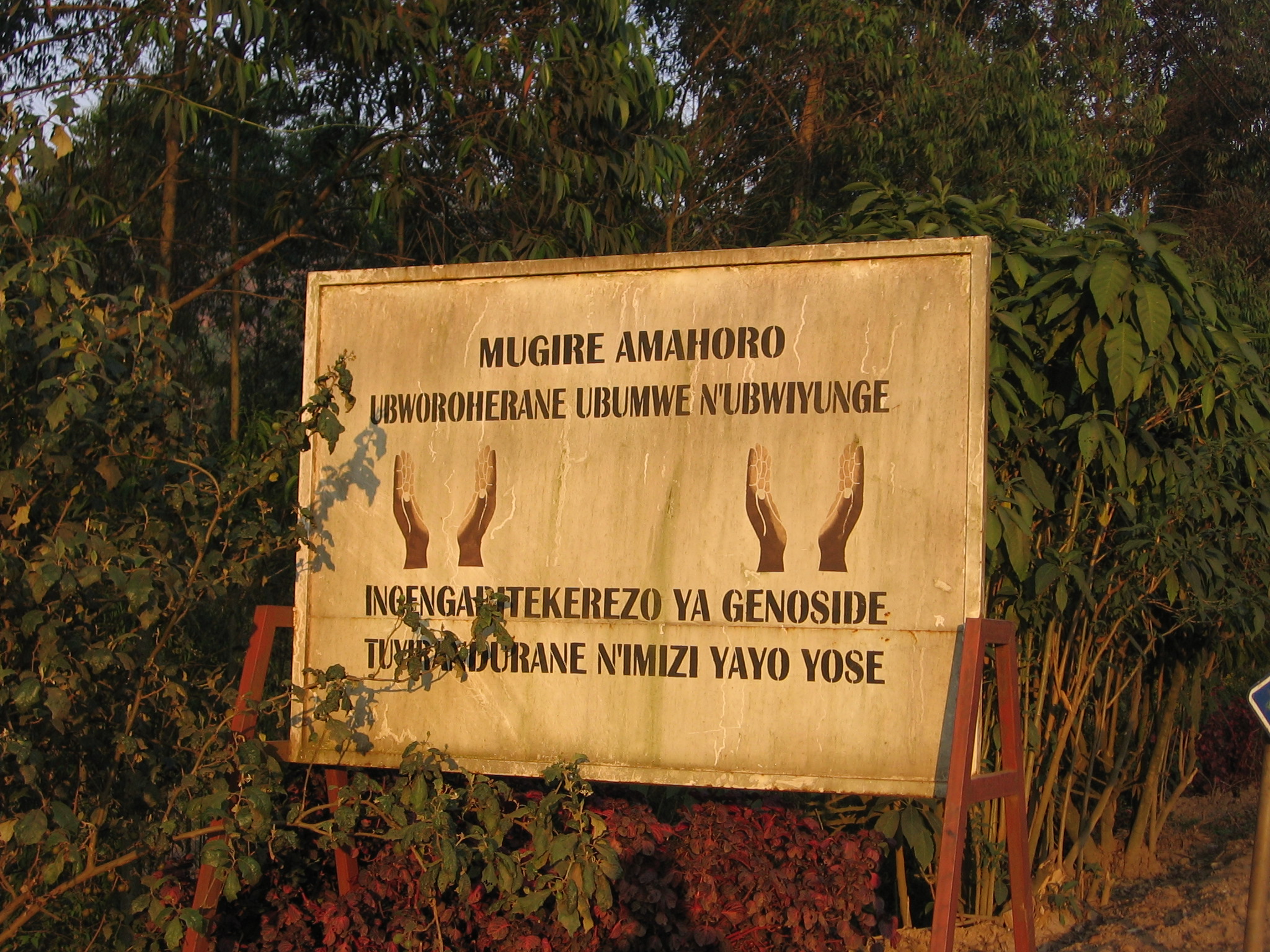July 2, 2009, Musanze, Rwanda
Today we got up bright and early to leave Kigali at 7 AM to go to the Rwaza Sector in northwestern Rwanda. The drive was stunningly beautiful– Rwanda as a whole has one of the most amazing landscapes I’ve ever seen, with tall, lush mountains covered in terrace farm areas, banana trees, sugar cane, and tall grass among with even taller blue and purple volcanic mountains in the distance. To get to Rwaza, we took windy roads through the mountains and valleys, and went around so many hairpin turns that I completely lost track. The bus ride was supposed to take 2 hours; instead it took closer to 3, as the busload of us was very heavy and the bus could only crawl up many of the hills. But I’m still impressed by how good both the roads and drivers have been here– I’ve definitely traveled on roads in far worse shape!
When we arrived in Rwaza, we first met with some community leaders and they talked to us about land reform. Land reform here in Rwanda is interesting– apparently about 4% of the land in Rwanda has been redistributed, mostly to genocide survivors, widows, and orphans (and often a combination thereof). Women (particularly widows, single mothers, and children without a living or known father) tend to be most vulnerable to having others make claims on their land, and its not unusual to have people actually succeed in forcing them off their land, sometimes their own family members. Working in the fields is often women’s work– we passed many women digging in the small plots of farmland and often bent over a hoe with an infant strapped onto their back. What’s interesting though is that there are regulations for the people on the redistributed land that they can only grow one kind of crop, which is problematic, as they told us that ideally they would like to be able to use their land to grow 2 or 3 kinds of foods, not just one. The terraced farmland is consolidated, so a family or small community works together to grow just one thing. It was unclear how much sharing goes on with families producing other crops, though I got the impression that the answer was not much. And the families complained that they were only allowed to grow maize, and thus didn’t always have enough food.
The difficulty was that this entire conversation occurred in Kinyarwanda, of course, but the translators (understandably) grew more and more lax in their translations, so a 5 minute conversation in Kinyarwanda would be boiled down to one sentence, or sometimes even just a few words, in English. So, the conversations with the women living in these communities was not as clear to me as I might have hoped. It quickly became clear to me that land reform has some very gendered aspects to it, but when I asked the women we interviewed if they felt that women had more difficulties accessing the land which they were entitled to, they said no, that it was the same for both men and women. But looking at this community of previously landless people who had been granted government land as widows and orphans and seeing almost no men, it seemed so clear to me that land in Rwanda truly is a feminist issue.
Anyway, we spoke with the women at their houses, which required hiking up a sizable portion of the mountain in Rwaza which was both gorgeous and also exhausting– some of the paths were incredibly steep, and the locals who led us to our destination took us on a couple of “shortcuts” which were even steeper! We had a “Fanta break” at one point, but after hiking, it’s really not soda that one craves, but just plain water! Sadly, that was unavailable, and I thought of the irony that in this incredibly impoverished community, we all sat and shared an unhealthy beverage with them, rather than providing them with what might actually be most useful. The fact that Coke is cheaper than water here just makes me sad. Also, I NEVER drink soda in the US, and at first it was kind of charming to drink it here out of the old fashioned bottles written in French, but the novelty and appeal of either Coke or Fanta has definitely worn off.
Anyway, the second family that we interviewed made lunch for everyone– Global Youth Connect had provided either the food, or money to purchase the food, since subsistence farmers in Rwanda (and much of the world, actually) live off of the equivalent of a dollar a day. It was also really interesting seeing the contrast between the Rwandese delegates and the Rwandans that we were interviewing. In Kigali, everyone wears fashionable Western clothing. Whereas in rural Rwanda, everyone was in traditional skirts, but what appeared to be donated western shirts and t-shirts that were in ok condition on the adults, but were literally in tatters on the young children. A few women wore full traditional clothing, and looked slightly more well to do, but most wore some sort off hodgepodge, and the poverty level was tangible. One of the older widows stopped me and gestured for money from me– I felt terrible for leaving her empty handed, but honestly, giving her a few hundred Rwandan francs — aside from the fact that we were specifically instructed not to– would have been an entirely unsustainable, and possibly divisive, form of assistance. My friend Cynthia has fundraised for AVEGA, an organization of genocide widows which does really great work here in Rwanda, and I decided to make a contribution to them instead. It may not help this exact woman who looked at me today with sad eyes and wizened hands, but AVEGA can provide ongoing support, whereas my 500 francs could not.






